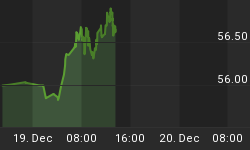9/30/2010 9:13:28 AM
The major indexes weren't able to cross above overhead resistance so followed the path of least resistance which was downward...
Recommendation:
Take no action.
Daily Trend Indications:

- Positions indicated as Green are Long positions and those indicated as Red are short positions.
- The State of the Market is used to determine how you should trade. A trending market can ignore support and resistance levels and maintain its direction longer than most traders think it will.
- The BIAS is used to determine how aggressive or defensive you should be with a position. If the BIAS is Bullish but the market is in a Trading state, you might enter a short trade to take advantage of a reversal off of resistance. The BIAS tells you to exit that trade on "weaker" signals than you might otherwise trade on as the market is predisposed to move in the direction of BIAS.
- At Risk is generally neutral represented by "-". When it is "Bullish" or "Bearish" it warns of a potential change in the BIAS.
- The Moving Averages are noted as they are important signposts used by the Chartists community in determining the relative health of the markets.
Current ETF positions are:
Short DIA at $108.57
Short QQQQ at $49.66
Short SPY at $114.82
We are long Oct $106 DIA puts at $185 per contract ($1.85 per share) on Friday, Sept 17th.
We are long Oct $48 QQQQ puts at $94 per contract ($0.94 per share) on Friday, Sept 17th.
We are long Oct $113 SPY puts at $231 per contract ($2.31 per share) on Friday, Sept 17th.
Daily Trading Action
The major index ETFs opened lower and moved higher to close the gap in the first fifteen minutes and then traded sideways either side of neutral for an hour before dipping to a low and beginning to move back up by around 11:00am. That move peaked shortly afternoon and a modest dip followed with another move higher that peaked with two hours left in the session. Sideways trading action couldn't hold with a sell-off in the final hour of trading and a recovery from the worst levels in the final fifteen minutes of trading. The Russell-2000 (IWM 67.67 _0.19) bucked the downward trend as did the Semiconductor Index (SOX 351.79 +2.33). The Bank Index (KBE 22.88 -0.11) lost a half of one percent while the Regional Bank Index (KRE 22.82 +0.02) was nearly unchanged. The 20+ Yr Bonds (TLT 105.58 -0.44) fell slightly again defying the normal inverse relationship it has with equities. NYSE volume was little changed on the low end of average with 1.009B shares traded. NASDAQ volume was also little changed with 2.070B shares traded.
In addition to the crude oil inventory report, there was a single economic report of interest released:
- MBA Mortgage Applications (9/24) fell -0.8% versus last month -1.8% reading
The report was released two and a half hours before the open.
Seven out of ten economic sectors in the S&P-500 moved lower led by Materials (-0.9%) and Financials (-0.8%). Energy (+0.7%) was the lone sector to move higher. Industrials and Tech were unchanged.
Implied volatility for the S&P-500 (VIX 23.25 +0.65) rose about three percent while implied volatility for the NASDAQ-100 (VXN 24.48 + 0.62) rose slightly less. Both closed at their 200-Day Moving Average (DMA).
The yield for the 10-year note rose three basis points to close at 2.51. The price of the near term futures contract for a barrel of crude oil rose $1.68 to close at $77.86. The U.S. Government's weekly report on crude oil inventories showed a draw down of -3.47M.
Market internals were mixed with advancers leading decliners 6:5 on the NYSE and by 9:8 on the NASDAQ. Up volume led down volume 51:47 on the NYSE while down volume led up volume 52:46 on the NASDAQ. The index put/call ratio fell 0.68 to close at 1.19. The equity put/call ratio rose 0.04 to close at 0.56. From a contrarian perspective, the insurance for the major indexes declined enough that the option sellers won't support the market here.
Commentary:
Wednesday's trading saw the major indexes join the Russell-2000 in a trading state. All three left their uptrend states. The opposite side of this is that the long-term bonds left their uptrend state as well. The only index we regularly monitor that isn't in a trading state is the Semiconductor Index, which is in an uptrend state rallying back from significant underperformance versus the other equity indexes through the end of August. Once again we saw the bears with the upper hand with continued selling but with losses quite modest.
In the bullish camp, we see the Russell-2000, which represents the risk trade, continuing to move higher. In the bearish camp, none of the major indexes seems to be able to continue moving up through their overhead resistance. We also note that the NASDAQ-100 and S&P-500 both signaled a likely bounce today. With the Russell-2000 and the Semiconductor index in the lead, if they are joined by the NASDAQ-100, this would be a potent ingredient to lead equities higher.
We will continue to be patient, even as we grow nervous about a potential bounce on Thursday.
We hope you have enjoyed this edition of the McMillan portfolio. You may send comments to mark@stockbarometer.com.















